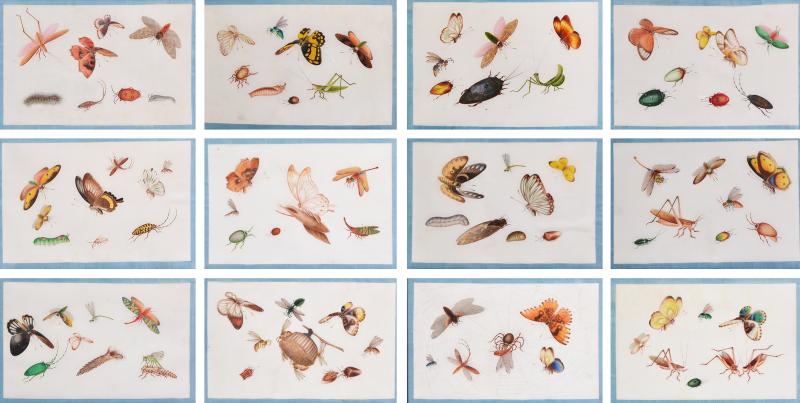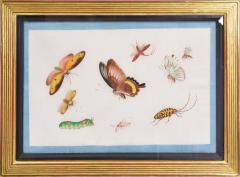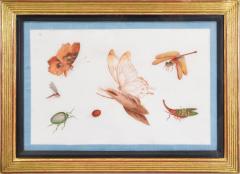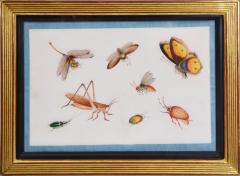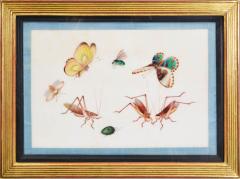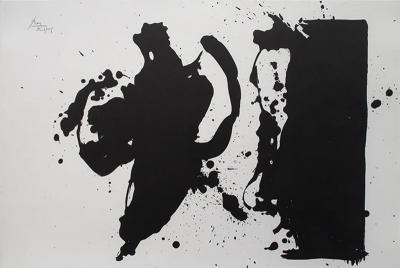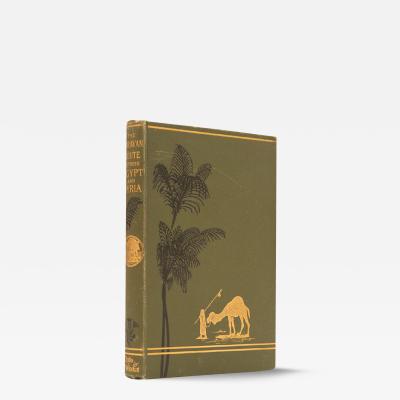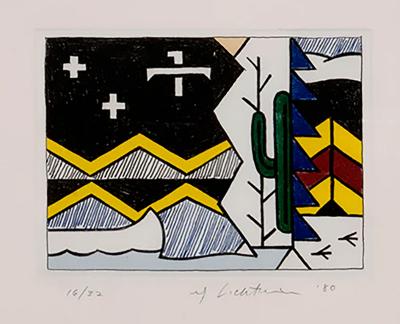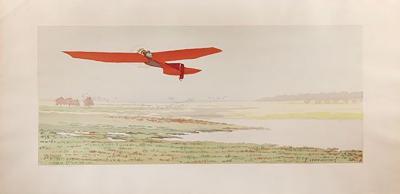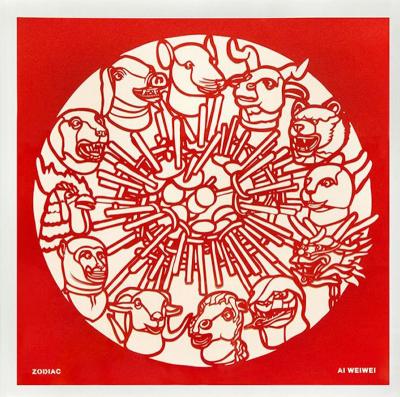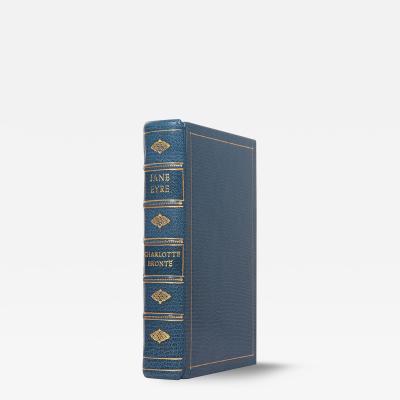A Group of twelve Butterflies and Insects .
-
Description
[China Export Watercolours on Pith Paper].
A Group of twelve Butterflies and Insects.
[Canton, c.1860]
A Group of twelve water-colour illustrations of butterflies and insects all on pith paper framed by a blue silk ribbon. Framed and glazed, overall size: 35cm by 26cm by 1.5cm.
Pith seems not to have been adopted for painting until about 1820. Some European museums claim that their paintings on pith (often erroneously called "rice paper" or "mulberry pith") come from the end of the eighteenth century but there do not seem to be any dateable examples that are so early. There is a record of the Kaiser Franz of Austria buying some albums from an English Consul-General Watts in 1826. We know of an Italian Count who visited Canton in 1828 and had over 350 paintings on pith in his baggage when he died in Ambon two years later. In the British Library there is a scrap-book containing six pith paintings and a journal entry by a serving British officer who sent them home from India in 1829. These examples and contemporary accounts by visitors to Canton suggest that there was a flourishing trade in pith paintings by the early 1830s.
Pith presumably came into use for painting to satisfy the increasing demand for small, inexpensive and easily transported souvenirs, following the massive growth in the China Trade in the first quarter of the nineteenth century. Paintings in oils, on board and canvas were costly and difficult to carry home. Earlier and more prestigious export water-colours had often been on a larger scale and painted on fine Chinese paper or on paper imported from Europe. The albums of pith paintings (and later the little glass-fronted boxes) were inexpensive, light, easy to pack and gave the pictures some protection on the long voyage home. Because many were sold in albums and hence protected from the light, they retain their bright colours to this day.
Pith comes from the central column of spongy cellular tissue in the stem of a small tree called Tetrapanax Papyrifera, native to south-west China. It has had a variety of uses, some going back many centuries. At the imperial court both men and women wore coloured flowers made from pith in their hair. For use in painting, it is cut by hand with a knife into thin sheets from short lengths of the spongy tissue. Cutting is highly skilled and the constraints of the process mean that the finished sheets for painting seldom, if ever, measure more than about 30cms by 20cms. The sheets are dried, trimmed and used for painting without any further processing.
Because of the nature of pith and its cellular structure, the gouache used by the Chinese sat on the surface and produced a bright and even sparkling effect. Very fine detail could be achieved but pith did not lend itself to the flat wash of colour favoured for European watercolours. - More Information
-
Dimensions
W. 13.78 in; H. 10.24 in; D. 0.59 in; W. 35 cm; H. 26 cm; D. 1.5 cm;
Message from Seller:
Based in the heart of Mayfair in London, we specialise in prints and original works on paper across a broad range of subjects, from antique prints to modern pochoir plates, as well as photographs from vintage photography to modern art photography.
Sold















